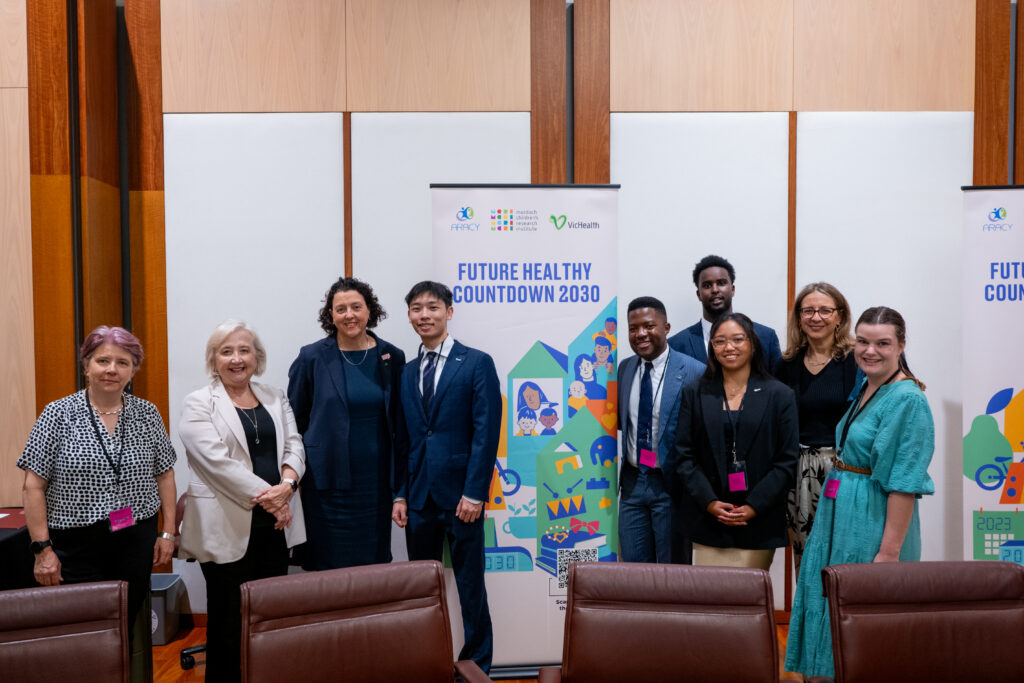A framework to spotlight the health and wellbeing of children and young people in Australia has been established to track progress annually and drive coordinated action and accountability.
The framework, called the Future Healthy Countdown 2030, is published as a supplement in the Medical Journal of Australia (MJA).
“Despite many gains, such as increased immunisation rates and education attainment, inequities have increased steadily in Australia over the past two decades,” write Dr Kate Lycett and her colleagues.
“One in six children [in Australia] live in poverty, one in four experience overweight or obesity, [and] three in five adults report experiencing some form of child maltreatment,” they wrote.
Dr Lycett is a senior research fellow in the School of Psychology at Deakin University.

“Measuring what matters to children and young people needs to be placed at the heart of policy decision making, with government commitment to regular reporting and with clear accountability mechanisms,” Dr Lycett and her colleagues stress.
“This inaugural MJA supplement proposes a path forward for Australia to create policy environments that centre on the health and wellbeing of our children and young people and future generations.”
Improving the current trajectory for children and young people requires better consideration of the upstream root causes of issues such as the social determinants of health, prevention, and the pre-distribution of spending, they wrote.
The voices of children and young people should also be considered in decision making, according to Dr Lycett and her colleagues.
The Future Healthy Countdown 2030 aims to spotlight the health and wellbeing of children and young people, the authors wrote, by:
- “measuring and monitoring progress on critical indicators in the lead-up to 2030;
- galvanising policy and public action, while providing accountability for essential improvements on critical indicators;
- showcasing the best available evidence that can be actioned to affect core measures; and
- spotlighting current policy priorities that need urgent attention”.
Current policies for children and young people often focus on their closest environments, such as family, school and community, Dr Lycett and her colleagues wrote.
“[While] these are key to ensuring children can thrive … the effects of policies within a wider circle of environmental influences — workplaces, societal, economic, political and cultural — also have an impact on their lives,” Dr Lycett and her colleagues wrote.
The societal factors that promote a civil society for children and young people include equality/diversity, trust and care, valuing parents, prevention more than cure, and safe places for all (here).
Although Australia has already made “tremendous” progress in what matters to children and young people, a literature review revealed that existing frameworks for reporting varied greatly, with very few indicators being measured annually, biennially or triennially, they wrote.
The Future Healthy Countdown 2030 uses six domains from the ARACY’s the Nest, with one added domain, which are:
- healthy;
- material basics;
- learning and employment pathways;
- participating;
- positive sense of identity and culture;
- valued, loved, safe; and
- environments and sustainable futures.
“In this first inaugural Future Healthy Countdown 2030 supplement, we asked Australia’s experts across child and youth health and wellbeing to canvass each of the seven domains used in the Countdown framework,” Dr Lycett and her colleagues wrote.
“They were asked to propose key indicators for progress in these domains [where change could make a difference] for all children and young people [by 2030] and, most importantly, for children in Australia who are the most vulnerable to poor outcomes.
“We plan to publish a refined set of Countdown indicators … in 2024.”
The supplement is supported by the Victorian Health Promotion Foundation (VicHealth), the Murdoch Children’s Research Institute (MCRI), and the Australian Research Alliance for Children and Youth (ARACY).
Read the Supplement in the Medical Journal of Australia.
Subscribe to the free InSight+ weekly newsletter here. It is available to all readers, not just registered medical practitioners.

 more_vert
more_vert